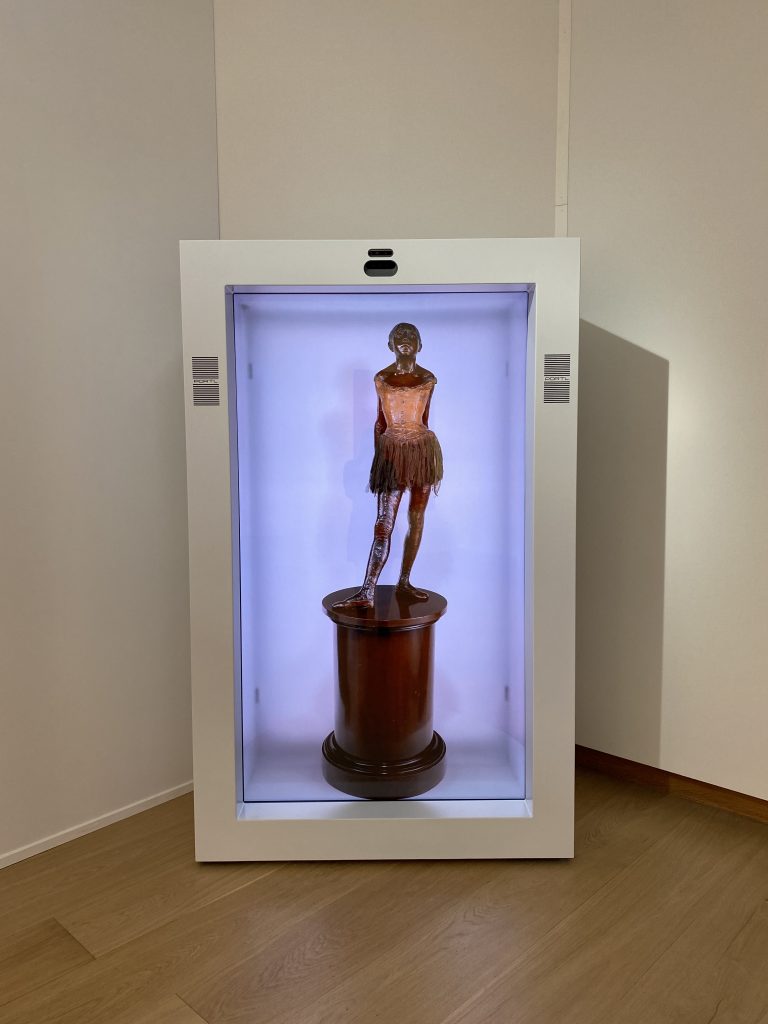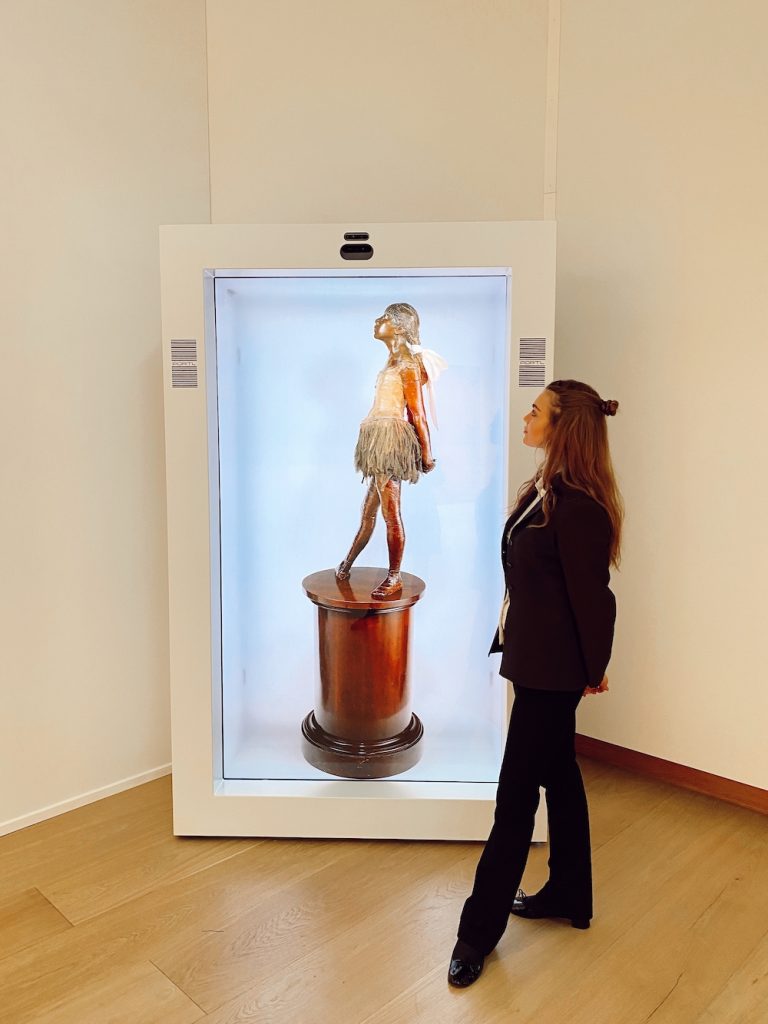Auctions
Christie’s Is Sending a Hologram of a $20 Million Edgar Degas Ballerina on a World Tour to Avoid the Cost and Complexity of Shipping
Is this the future of auction-house previews?

Is this the future of auction-house previews?

Taylor Dafoe

The same type of technology that brought Tupac to Coachella is now being used to take an Edgar Degas ballerina on tour.
Last week, a hologram of the French artist’s sculpture Petite danseuse de quatorze ans toured Christie’s outposts in San Francisco and Hong Kong as part of the auction house’s preview of works in its upcoming sale of the late Anne Bass’s collection. The likeness of the 40-inch-tall bronze ballerina was displayed inside an illuminated, refrigerator-sized box.
It’s the first time Christie’s has deployed the technology, which it sees as a viable alternative to increasingly risky, environmentally damaging, and exorbitantly expensive international shipping. (The company already had the viewing boxes on hand in both San Francisco and Hong Kong, so there was no physical shipping required.)

Courtesy of Christie’s.
This particular Degas bronze is particularly sensitive given its age, according to Devang Thakkar, senior advisor for digital and technology at Christie’s. “The hologram provides a lifelike digital replica displayed in three dimensions rather than flat digital screens like TVs or our computer monitors,” Thakkar told Artnet News, “allowing for an immersive and interactive experience.”
The actual sculpture, a bronze cast created in 1927 based on a wax model that dates to 1879–81, is estimated to fetch between $20 million and $30 million on May 12 in New York. It’s one of three works by the artist on offer.
A Christie’s spokesperson said there are no plans for future hologram viewings at this time.
The devices used to show off the Degas belong to Proto, a Los Angeles-based startup behind products that allow users to transmit live, three-dimensional representations of themselves to, say, faraway meetings or lectures.
“Beaming people places also saves an enormous amount of time, money, and carbon damage too,” said Proto CEO David Nussbaum.
The collaboration with Christie’s isn’t Proto’s first dalliance with the art world. Nussbaum’s company has been involved with the display of numerous NFT projects—a “dozen” of which occurred around last year’s Art Basel Miami Beach—and has an app that “turns your Proto into a full-service touch-screen art gallery.”
He’s open to other artistic uses, too. “It would be amazing for a museum to commission a performance art piece—maybe beaming live to cities all over the world,” Nussbaum went on. “How great would it be to see Marina Abramovic do something with Proto? Would The Artist is Present work via holoportation? Instead of beaming people, what if Cai Guo-Quiang created one of his gunpowder events live via Proto? What amazing polka-dot and mirrors ideas would Yayoi Kasuma have?”